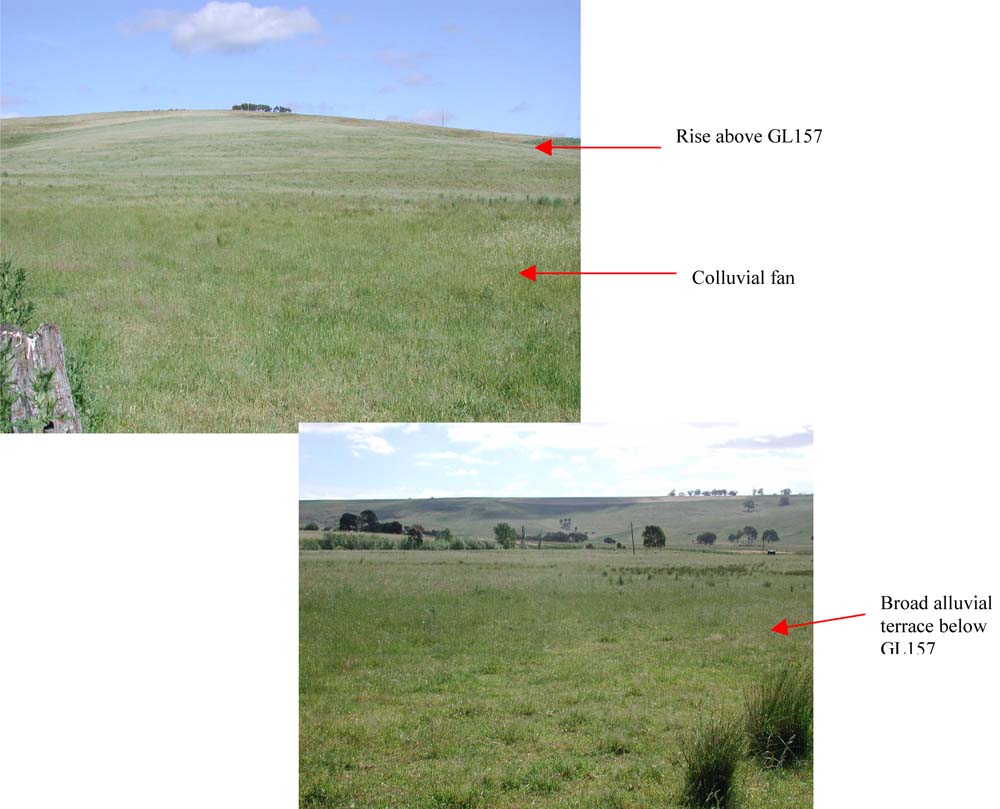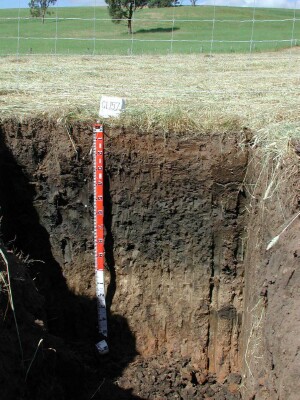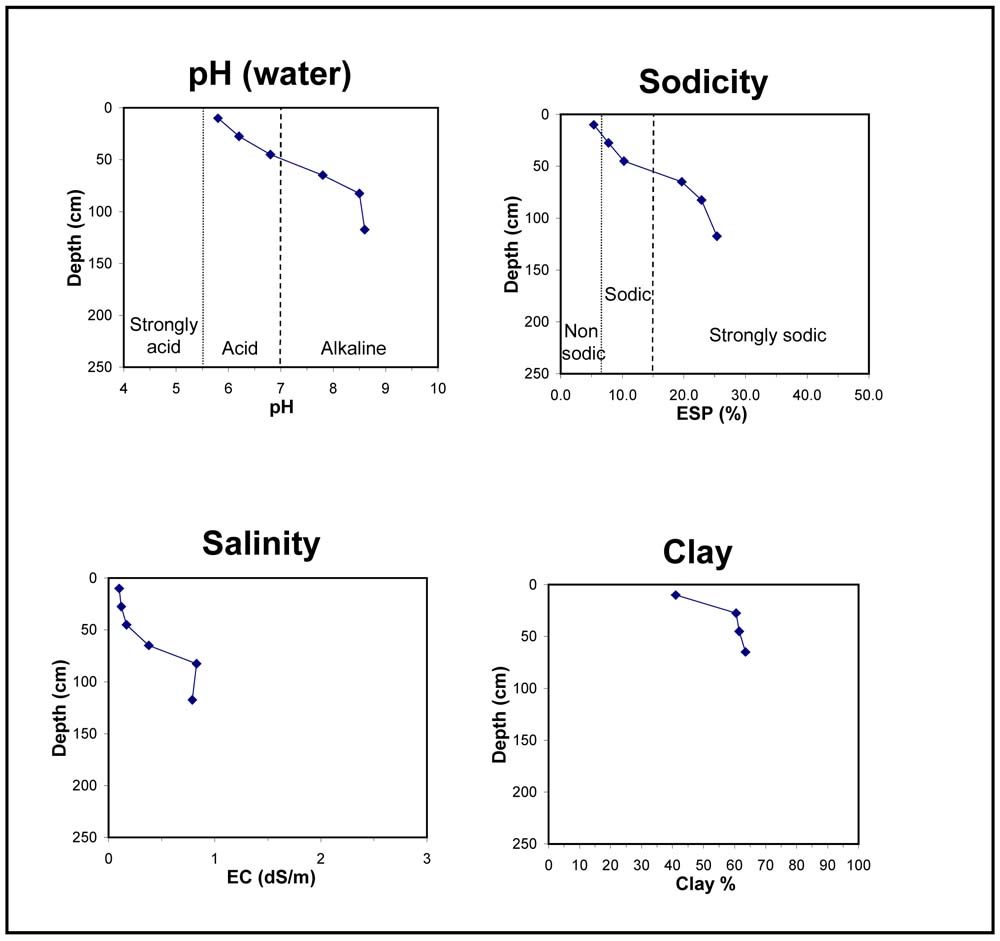GL157
| Site: GL157 | Land Unit: Dundas Tillite |
| Aust. Soil Class.: Vertic, Mottled-Subnatric, Black SODOSOL (confidence level 1) | |
 | General Land Unit Description: This land unit consists of the Permian glacial, fluvial and lacustrine sediment outcrop in the valleys of the Dundas Tablelands. The landform is mainly dissected low hills and rises. The main soil types occurring on this unit are Black Sodosols or Black Vertosols. Grey Sodosols commonly occur on the lower slopes. Most soils become considerably more sodic at depth, which contributes to the imperfect drainage of the soil. This land unit is highly susceptible to water erosion, due mainly to the deep sodic soils. As the Tillite is a mixture of materials (not totally consolidated) the soils (particularly the grey soils) tend to be less stable when exposed. Land slips are common in this land unit. This site occurs on the Dundas Tablelands. It is situated on a colluvial fan below a rise, leading to a broad alluvial plain. Black clay veins moving through the profile is an indication of the cracking nature of the soil. The internal drainage of the soil is imperfectly to poorly drained. The subsoil becomes considerable more sodic at depth, which may be a cause of the impeded internal drainage. There would be significant runoff accumulating on the site from the dissected tablelands above. The topsoil may be the result of more recent accumulation. On some of the steep slopes of the Merino tablelands, relic soil slumping is evident, and the slopes are still susceptible to landslips. |
Site Description:
| Slope: 4% | Geology: Permian tillite |
| Landform pattern: Undulating rises | Position in landscape: Lower slope |
| Internal drainage: Imperfectly to poorly drained |
| A1 | 0-20 cm | Dark brown (7.5YR3/2) clay loam, fine red (2.5YR4/6) oxidised root mottles are common, strong subangular blocky structure (2-5 mm), weak consistence when moist; clear transition to: |  |
| Subsoil | |||
| B21 | 20-35 cm | Very dark grey (7.5YR3/1) medium heavy clay, many faint fine brown mottles (7.5YR4/4), moderate blocky structure (2-20 mm), very firm consistence when dry, very plastic when wet; gradual transition to: | |
| B22 | 35-55 cm | Very dark greyish brown (10YR3/2) medium heavy clay to heavy clay, many fine distinct brown mottles (7.5YR4/4), moderate blocky structure (2-20 mm), very firm consistence when dry, very plastic when wet, black veins evident due to cracking; gradual transition to: | |
| B23 | 55-75 cm | Very dark grey (2.5Y3/1) medium heavy clay, fine distinct light olive brown mottles are common (2.5Y5/4), moderate to strong structure, very plastic when wet, black veins evident due to cracking; gradual transition to: | |
| B24 | 75-90 cm | Dark grey (2.5Y4/1) heavy clay, a few faint fine yellow mottles, moderate to strong structure, black veins evident due to cracking; gradual transition to: | |
| B25 | 90-145 cm | Light olive brown (2.5Y5/3), heavy clay to medium heavy clay, moderate prismatic structure (10-100 mm), consistence strong when dry to very firm when wet, very few fine calcareous flecks, black veins evident due to cracking; gradual transition to: | |
| C | 145-155 cm | Brown (7.5YR4/4), heavy clay, black veins evident due to cracking. |
Key profile features:
- Sodic subsoil
- Cracking clay subsoil
- Alkaline subsoil
- Mottled subsoil
- Topsoil dispersive when worked when wet
- Subsoil dispersive when dry



